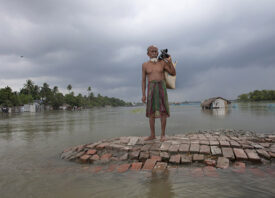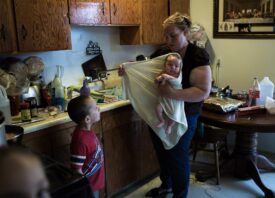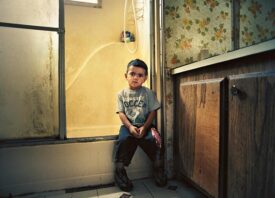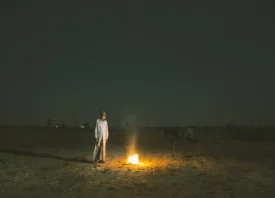Search this site
The Brutal Effects of the Climate Crisis Across the US

Revolution: Climate Crisis” presented by the Bronx Documentary Center

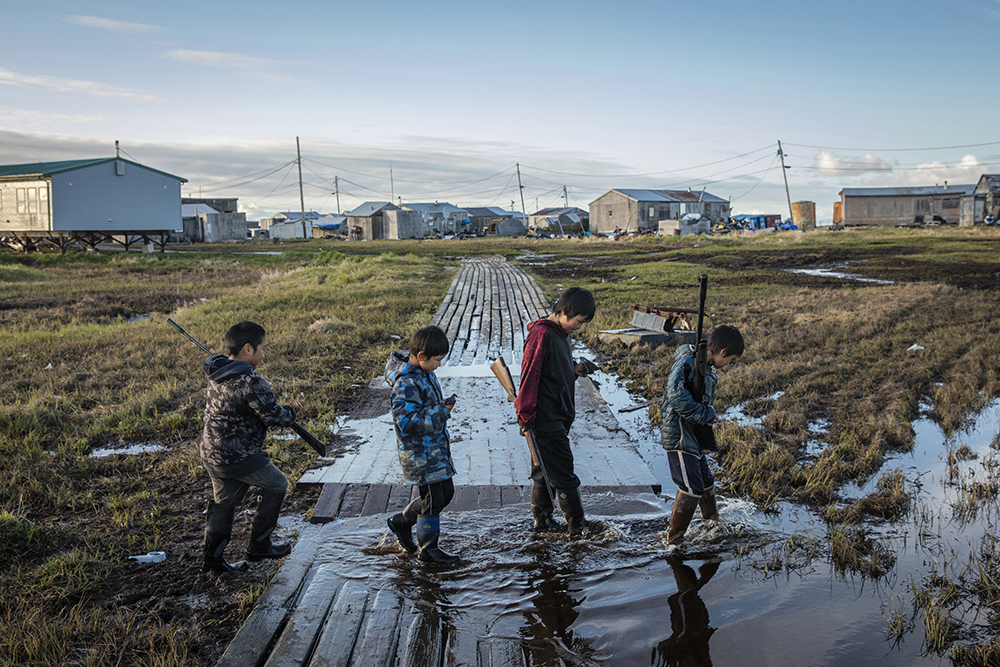
Homo sapiens first appeared in the nearly 200,000 years ago in Ethiopia. Their footprints have vanished, their accomplishments turned to dust—but one thing that survived them is their stewardship of the earth. But with the advent of European exploration into the Western Hemisphere, the seeds of climate change were planted, taking root during the Industrial Revolution, and progressing at a cataclysmic rate that now poses an existential threat to life as we know it. For Trump Revolution: Climate Crisis, the second installment in the Bronx Documentary Center’s series exploring the impact of the Presidency of Donald Trump, curators Michael Kamber and Cynthia Rivera explore how the 45th President of the United States has overturned decades of environmental policy in just a few year.
Bringing together the work of photographers Stacy Kranitz, Kadir van Lohuizen, Yuri Kozyrev, Katie Orlinsky, Bryan Thomas, and Marcus Yam, the exhibition looks at the profound effects of White House policy on American society and the planet itself. Here Michael Kamber, Founder and Executive Director, shares his insights into this harrowing chapter of contemporary American life, sharing the impact of an anti-science administration on the people and the land.

Could you give us a sense of where Climate Crisis fits into the larger Trump Revolution exhibition series?
“Love him or hate him, President Trump has completely turned America upside down in a number of inter-related ways. So the BDC is looking at foreign policy, immigration, the media, nationalism and the environment in our Trump Revolution series. The environmental decisions made by Trump may very well have the most long lasting, destructive and far-reaching effects of anything that he has done.”
Could you speak about what you see as the most important aspects facing the nation and the globe as a result of Trump White House policy on climate change?
“Pulling out of the Paris accords was a devastating blow to international cooperation on reducing global warming. But it doesn’t stop there. Trump has literally put oil and coal lobbyists in leading positions at the EPA and other agencies as you can see on our exhibition site. He and his appointees have rescinded hundreds of regulations protecting the environment and stopping global warming. They are green-lighting fossil fuel projects at national parks around the country and deregulating our country‘s largest polluters. From an ecological point of view the results are devastating.”
How did you determine which photographers and stories you wanted to feature in the exhibition?
“We looked at a broad range of projects from around the country. We wanted to make sure we had good geographic diversity as well as diversity in terms of subject matter. It was important to get the California wildfires in there but also to show rising sea levels, the melting of the permafrost in Alaska and the effect of fossil fuel companies that are continuing to pollute our environment in the American South.”

Could you discuss the interconnections that exists between these various projects, such as the melting polar caps and rising sea levels, and their impact on states as far apart as Alaska and Florida?
“It has been well documented at this point that there is no place on earth, and certainly not in the US, that has not been strongly affected by climate change. From the rising sea levels, to the increasing wildfires, to the extinction of species, we are in the midst of an interconnected environmental disaster that we have not yet begun to understand or to cope with. This is affecting Americans from Alaska to Florida to Maine.”
Could you speak about how photographs can convey the issues of climate change, and how visualizing the issues at stake help people better understand the scale and scope of the crisis?
“As with many things, we frequently see a statistic that gives you a percentage or a degree. It can be very hard to actually visualize and understand the crisis at hand. The photos from our exhibition on the enormous wildfires ripping through California or the indigenous peoples in Alaska or the lives of African Americans in Louisiana’s Cancer Alley are undeniable documents that bring the crisis home.”
Many people feel overwhelmed by the issues raised by climate crisis. Do you have any suggestions for how they can contribute the cause?
“The BDC’s mission is not to tell people how to live and I think everyone needs to evaluate their own lifestyle and decide what is right for them. Small changes and increased awareness do make a big difference however.
“One of the biggest differences people can make is simply turning off their air conditioners. One air conditioner often uses more electricity than everything else in your house combined. Turning off AC when you’re not home goes a long way.
“Giving up meat is another step people can take in helping to protect the environment: the waste products and intensive feeding process for the millions of animals that we slaughter each year is catastrophic. And there are now quite good soy products available that taste very much like meat. “
“Recycling, which many of us already do, makes a big difference but I find that many people don’t actually recycle correctly so learning about local guidelines can be a big step. Improperly recycling means that most or all of what you put in a recycle bin may get thrown into a landfill.
“Of course driving a car less, riding a bike, flying less frequently, line drying your laundry and many more small changes add up to a real difference. Educating your children and neighbors about the importance of conservation is also important.
“Lastly, people can reach out to their local representatives to let them know that they care about this and vote for candidates that support their way of life and will keep the earth in better shape for our children.”


